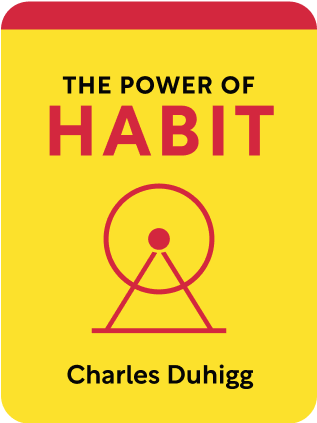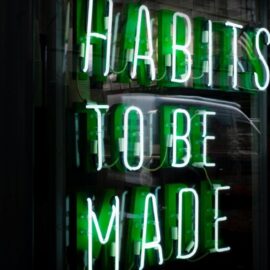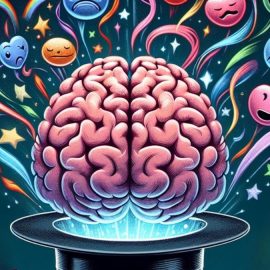

This article is an excerpt from the Shortform book guide to "The Power of Habit" by Charles Duhigg. Shortform has the world's best summaries and analyses of books you should be reading.
Like this article? Sign up for a free trial here .
What is The Power of Habit book? Why is it important to understand how and why we develop habits?
The Power of Habit book by Charles Duhigg explains how we form habits, and how to use this system to form good habits. The book also offers a step-by-step guide for changing your habits.
Read more about The Power of Habit book.
The Power of Habit Book
Do you have any bad habits you want to break? Or do you want to start a new habit, like healthier eating, exercise, or reading more?
You’re not alone. People try and fail to change their habits all the time. But they often fail because they believe it’s simply about willpower – stopping the habit brute force – without understanding the nature of the habit and how to most effectively change it.
The Power of Habit book gives you an incredibly useful framework for understanding your habits and for changing them. In short, you must set up a routine that gives you fast positive feedback, and keep doing it until it becomes a fully-formed habit. Learn the strategies for developing a lasting habit here.
The Power of Habit Book Explains: What are Habits?
You think you’re making decisions all day, but more than 40% of the actions you take each day are actually habits.
Habits are choices that you continue doing repeatedly without actually thinking about them. At one point, they started with a decision, but they eventually became automatic.
They’re very powerful, and sometimes destructive. You can probably think about things you do everyday that you wish you did less of (binging Netflix shows; habitually opening Facebook; snacking when you’re not hungry).
But if you can understand how habits are triggered, you can overcome them.
Components of a Habit
According to The Power of Habit book, habit has 3 steps:
- A cue, a trigger that tells your brain which habit to use and puts it into automatic mode.
- A routine, which acts out the habit. This can be physical, mental, or emotional.
- A reward, which is the result of the routine and reinforces the habit.
Habits start as a conscious decision, but ultimately the loop can reinforce itself. Over time, you may end up losing full control over your behavior – with a cue, your brain goes into autopilot and executes the routine.
The good news is that by consciously recognizing your cues and rewards, you can combat your habits.
Cravings
The final essential component of a habit is craving. A craving is the anticipation of the reward when you get the cue, even before you actually get the reward. This craving pushes you through the routine so that you get the reward at the end of the habit. And if you don’t push through the routine, you don’t get the reward, and the craving is unsatisfied – making you unhappy.
Let’s make this concrete with a few more real-life examples.
Checking your phone:
- Cue: hear your phone buzz
- Craving: who’s contacting me? What’s going on in the world?
- Routine: stop everything you’re doing and check your phone
- Reward: get pleasure from the momentary distraction from a text, email, Tweet, etc.
Changing Your Habits
Over time, habits become deeply ingrained. Over many iterations of the habit loop, the transition between cue, craving, routine, and reward become automatic. Think about any personal habits that you want to break, and how hard they seem to change. Once you get a cue and craving, it can seem almost as though you lose control and act on auto-pilot.
Luckily, research into successful methods of behavior change have revealed the best practices of changing your habits. Here’s what The Power of Habit book says about changing your habits.
Step 1: Identify the Cues and Rewards
First and foremost is understanding your own habits. First, identify the cues or triggers that kick off your habit. Every time you feel tempted with a craving, make a note to yourself on paper. Then think about what happened recently, or what you felt recently, that kicked off the craving.
Next, understand the reward you get after the routine. This could be a physical one, like food, or an emotional one, like relief of boredom or feeling socially connected. Think deep, and ask yourself “why?” five times. Often, the real root cues and rewards are not the superficial ones that first come to mind.
Step 2: Change the Routine
Once you identify your cues and rewards, you want to work on actually changing the habit.
It turns out that it’s incredibly hard to completely eliminate old habits. For some reason, even after a long time, experiencing a cue can trigger old habits despite your best intentions. This is why alcoholics and smokers can fall off the wagon after just smelling cigarette smoke or having one taste of alcohol.
Luckily, there is one Golden Rule: to change a habit, keep the same cue and the same reward, but change the routine.
Because your brain’s already wired in the habit, it’s hard to totally resist the temptation of the cue and the craving, for the rest of your life. Instead, a more successful strategy is to replace the routine with something more productive, so that you get the same reward at the end.
Step 3: Break through Pain Points
The key to developing willpower is to predict the most painful points, and build a specific plan beforehand for how you’ll work through them. For example, if you want to start running, the most painful point is probably when you get off the couch, put on your shoes, and take the first 20 steps. After that, you can get into the zone.
To build a habit, construct a routine ahead of time to push through the pain, and keep practicing it until it becomes a habit. You don’t necessarily need to have a greater bank of willpower – you just need to make self-control automatic so you don’t even think about it, and this conserves willpower for later.

———End of Preview———
Like what you just read? Read the rest of the world's best book summary and analysis of Charles Duhigg's "The Power of Habit" at Shortform .
Here's what you'll find in our full The Power of Habit summary :
- The 3 steps to change your habits
- Why habits are at the root of success in football
- How social movements are just an expansion of habits from individuals to communities






